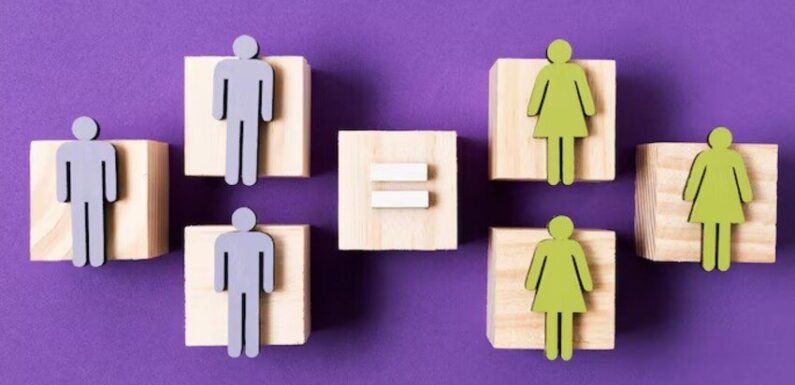
Research should be fair, honest, and accurate. But sometimes, bias enters and ruins the results. One common bias is selection bias. It happens when certain people or data are left out. Let’s explore the meaning, causes, examples, and solutions of selection bias in simple words.
Define Selection Bias
Let’s first simply define selection bias. Selection bias happens when a sample does not represent the full population. It affects research accuracy and leads to wrong or unfair conclusions. If the data selected is not random or fair, bias can occur.
To define selection bias clearly:
It is a type of error that happens when certain groups are more likely to be included or excluded. As a result, the study does not reflect the full picture.
Causes of Selection Bias
Let’s look at common causes of selection bias. These are often simple mistakes but with big effects.
1. Non-Random Sampling
This happens when participants are chosen on purpose. For example, a survey is only for people in one city. It leaves out others and does not reflect the entire population.
2. Self-Selection
Sometimes people decide whether to join a study. This means only people with strong opinions may take part. It creates an unfair sample and leads to bias.
3. Loss to Follow-Up
In long studies, some participants stop responding. If many drop out, the remaining group may no longer represent the original group.
4. Exclusion Criteria
Researchers sometimes exclude certain data or people. This may be needed, but it can cause bias if not handled carefully.
5. Sampling from a Special Group
If you only pick people from a school, hospital, or gym, it may not represent the general population.
Examples of Selection Bias
Let’s make the meaning more clear with real-life examples.
Example 1: Health Study
A study on exercise includes only gym-goers. This group is likely healthier than others. So, the results do not apply to everyone.
Example 2: Online Poll
A poll about internet use is shared only on Twitter. Older people or non-users are left out. This leads to biased answers.
Example 3: School Survey
A survey about education includes only top-performing schools. It ignores schools with fewer resources. This makes the results unfair.
Example 4: Medical Research
A drug test only includes young adults. It skips older or sicker patients. The drug may not work the same for everyone.
Why Selection Bias Matters
Selection bias leads to wrong findings. It can harm real-life decisions, like health, law, or policies. Biased studies may waste time, money, and even risk lives. That’s why it’s important to fix it early.
Solutions to Avoid Selection Bias
Now that we have defined selection bias and seen its causes, let’s solve it.
1. Use Random Sampling
Random sampling means everyone has an equal chance to be selected. It makes the sample more fair and balanced.
2. Ensure Large Sample Size
A bigger sample reduces the effect of bias. Try to include as many different people as possible.
3. Keep Participants Engaged
In long-term studies, follow up regularly. Use emails, calls, or visits to reduce dropouts.
4. Pre-Test Your Method
Before the main study, test your sample plan. See if some groups are missing or over-represented.
5. Be Transparent
Always explain how your sample was chosen. Mention any limitations in your study report.
6. Use Weighting Methods
If some groups are over- or under-represented, adjust the weight of their data. This helps balance the results.
Conclusion
To get accurate results, we must avoid bias. Selection bias is a major cause of poor research. It happens when the sample does not represent the whole group. We have discussed what it is, how it happens, and how to fix it.
To define selection bias simply:
It is when your study misses some parts of the population. This leads to false, unfair, or misleading results. Always choose samples wisely. Avoid shortcuts. Use fair methods and stay honest in your research. This will help you get real, helpful, and trustworthy results.
FAQs
1. What does “define selection bias” mean?
It means to explain what selection bias is. Selection bias is when the chosen sample is unfair or unbalanced.
2. What is a real-world example of selection bias?
A survey shared only online may miss people without the internet. This makes the sample biased.
3. Can selection bias be removed completely?
It can be reduced but not always removed fully. Using random sampling and large groups helps a lot.
4. How does selection bias affect research?
It makes the results unreliable. You may draw wrong conclusions from the study.
5. Is self-selection a form of selection bias?
Yes, when people choose to join a study, it may lead to bias.
6. Why is it important to define selection bias in reports?
It helps readers understand the study’s quality and limits. It also shows honesty from the researcher.
Tech World Times (TWT), a global collective focusing on the latest tech news and trends in blockchain, Fintech, Development & Testing, AI and Startups. If you are looking for the guest post then contact at techworldtimes@gmail.com

